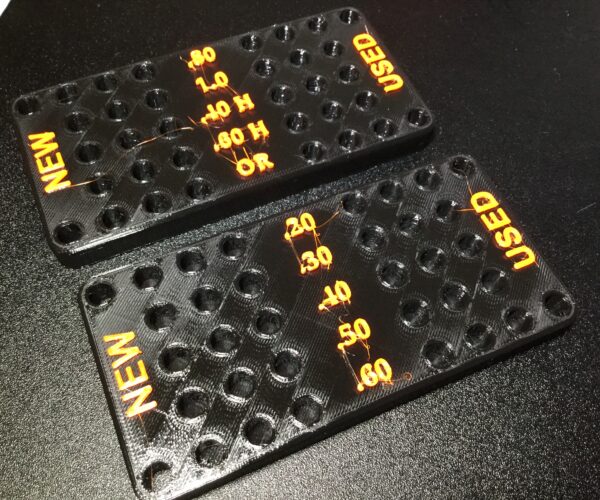Acceptable stringing?
Just starting to print stuff and noticed some stringing. I printed a project with contrasting colors, so you can really see how much or little there is. I’d appreciate some feedback on if this is acceptable or do I need to start finer tuning it?
This was a PETG print and I’m using Slicer and Prusa filaments.
RE: Acceptable stringing?
Stringing is a cosmetic defect, so it really depends on what you're comfortable with.
I wrestled with it for a while before I realized a lot of stringing I experienced was due to the filament having absorbed moisture. Now when I notice stringing, I dry the spool before I start twiddling settings.
The rest of my stringing was due to slight over-extrusion. Once I started calibrating my slicer extrusion multiplier settings for each filament, most of those problems went away. I was also able to turn off wiping and greatly reduce my retraction settings which has the added benefit of speeding up prints.
Some filaments are simply stringier than others. PETG is particularly prone to stringing. For fine wispy strings, a quick pass with a heat gun will usually clean them up.
and miscellaneous other tech projects
He is intelligent, but not experienced. His pattern indicates two dimensional thinking. -- Spock in Star Trek: The Wrath of Khan
RE: Acceptable stringing?
And I just had some older orange PLA2 filament start stringing - so I dried it for four hours and it still was stringy,, so I dried it for another 8 hours and it was still stringing. The spool is now empty and it is no longer stringing. Problem solved.
Some filaments are just more stringy that others. This particular spool was from my favorite vendor, the same type as several other spools I have to do not string, only difference is color. I have some wood filled filament that strings so badly that I use it for special effects (Groot coated in spider webs is a good look).
Moisture is the first place to look, then print temps. Some filament will prefer a modest change in temps. A few degrees higher, a few degrees lower. Also, room ambient humidity will play a role. The flip side is plastic needs some moisture to print well. So bone dry also isn't a solution (may have been what I was fighting with that orange).
After several years, I have more or less given up on controlling stringing; it is just part of the work flow to get the heat gun out to de-cobbify some prints.
